What's New
Displaying results 381 - 390 of 4052
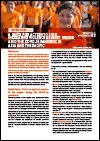
Resource | Guidelines,
This is a guide for governments, aid agencies, service providers, businesses and other groups on what to do to protect women from violence during the pandemic and its associated array of lockdowns, movement restrictions, services closures, and other disease control measures.
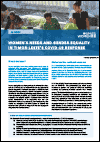
Resource | Publications,
Women and girls’ immediate and long-term needs must be addressed and integrated into Timor-Leste’s COVID-19 response, in order to ensure both women’s access to services and human rights, and to enable women to contribute to shaping the response. Based on lessons learned from previous outbreaks, this brief outlines gender issues related to the COVID-19 pandemic and response in Timor-Leste, and puts forward key questions to be considered by COVID-19 decision makers in Timor-Leste.

Resource | Publications,
This guidance note is meant to assist humanitarian actors, youth-led organizations, and young people themselves across sectors, working at local, country, regional, and global levels in their response to the novel coronavirus pandemic. It begins diagnostically, exploring the impacts of coronavirus disease (COVID-19) on young people. It then proposes a series of actions that practitioners and young people can take to ensure that COVID-19 preparedness, response plans and actions, are youth-inclusive and youth-focused – with and for young people.
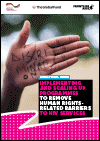
Resource | Publications,
This guide provides practical guidance on how to design, implement and monitor programmes aimed at removing human rights-barriers to HIV services.
It will help implementers of such programmes to:
- Cost, monitor and evaluate programmes
- Effectively combine and implement them
- Use a comprehensive approach
- Achieve the right level of investment
- Increase meaningful local capacity
- Improve community engagement
- Strengthen health and community systems
- Ensure sustainability

Resource | Publications,
We are facing a global health crisis: health systems are being tested, as shortages of both staff and resources place intense pressure on services. As the world struggles to get COVID-19 under control, our global health workforce is under increasing strain – and woman-centred, midwifery-led care is more at risk than ever. This publication provides clear actions to ensure the continuation of midwife-led care, and the protection of maternal health and rights.
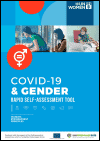
Resource | Tools,
Building on the seven Women’s Empowerment Principles (WEPs), this COVID-19 and Gender Rapid Self-Assessment Tool enables companies to assess their COVID-19 response and ensure they are supporting women during and beyond the crisis with gender-sensitive measures throughout their value chain. An Excel-based version of this self-assessment tool can also be used to develop a personalised action plan based on business actions to date, providing a clear path forward for companies to “build back better and more gender-equal.”
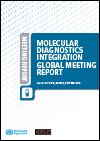
Resource | Publications,
This report summaries a global meeting organized by WHO and the African Society for Laboratory Medicine (ASLM) with countries and key stakeholders in diagnostics to discuss and find concrete ways to improve and increase access to integrated multiplex technologies and determine how they can be translated into public health policy and ultimately have global impact.
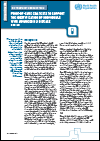
Resource | Guidelines,
Despite increases in access to antiretroviral therapy (ART), declines in AIDS-related deaths have plateaued in recent years. Even after starting ART, patients with severe immunosuppression have a high risk of death. Implementing a package of care for patients with advanced HIV disease is critical; however, identifying those in need has remained a challenge.
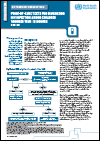
Resource | Guidelines,
Despite long-standing WHO recommendations and significant investments in building testing capacity, in 2018 only 59% of HIV-exposed infants received a virological test for HIV by 2 months of age, and testing coverage is even lower at later time points for children who are still breastfeeding. Unfortunately, however, 50% of perinatally infected infants and 25% of infants and children infected during breastfeeding will die before 2 years of age without ART.
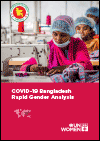
Resource | Publications,
Given the social distancing measures, RGA desk review contrasts pre-COVID-19 gender information and demographic data against new gender information from a multitude of surveys and qualitative sources. It examines the immediate impact of COVID-19 on pre-existing structural social and economic vulnerabilities of women, girls and diverse gender groups, and the challenges faced by these groups in accessing information and health, education, and WASH, protection and Gender-Based Violence (GBV) services as well as support for livelihoods.





